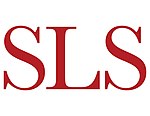Lane Medical Library
Lane Medical Library is the library of the Stanford University School of Medicine at Stanford University, near Palo Alto, California. Its mission is to "accelerate scientific discovery, clinical care, medical education and humanities through teaching, collaboration, and delivery of biomedical and historical resources". It is located on campus adjacent to Stanford Hospital and Clinics. In addition to books, journals and documents for medical research and the teaching and practice of medicine, Lane Library houses a significant collection of material relating to the history of medicine. The library also provides specialized search capabilities, classes and tutorials, writing and grant support, and group and individual study spaces.
Excerpt from the Wikipedia article Lane Medical Library (License: CC BY-SA 3.0, Authors).Lane Medical Library
Panama Mall,
Geographical coordinates (GPS) Address Nearby Places Show on map
Geographical coordinates (GPS)
| Latitude | Longitude |
|---|---|
| N 37.425686 ° | E -122.16736 ° |
Address
Stanford University
Panama Mall 408
94305
California, United States
Open on Google Maps






